Have you ever took the time to appreciate the street art while travelling? On a recent Colombia tour, we did just that. In another instalment from a wonderful trip to Colombia, we join Dale from The Maritime Explorer as he describes the street art encountered on his travels through La Candelaria Bogota. We hope in sharing his blog written from a recent departure, you enjoy this piece as much as we do.
This is my fourth post on a recent trip to the wonderful country of Colombia with Adventures Abroad. You can find the first two describing our activities on the first day on this website. Day two began with an ascent by funicular up to Monserrate, the sacred mountain that overlooks Bogota where we enjoyed fantastic views of the city. After returning to the funicular station or local guide Catalina Rincón led us on foot to the oldest and most interesting city district of La Candelaria Bogota. One of the main attractions for me in signing up for Colombia was to see the world famous street art in Bogota and Medellin. I am about to get my first look as we head into La Candelaria. Please come along and enjoy the amazing talent of these Colombian magicians.
Quinta de Bolivar Museum
Just below the funicular station there is a large walled off estate which was the residence of Simon Bolivar following the successful end of the war for independence from Spain. Today it houses the Quinta De Bolivar Museum and unfortunately all we have time for is a picture at the entrance. In preparing for this trip Alison and I listened to the audible book Bolivar: American Liberator by Marie Arana and it really opened our minds to the magnitude of this man’s accomplishments. The war for independence from Spain by the South American colonies was a far bloodier affair than the American Revolution. In comparison to the effort that Spain put in to keep modern day Colombia, Venezuala, Ecuador and Peru, it’s almost like the Brits hardly even tried against their American colonists. Bolivar is a monumental figure in Latin America and I expect to see a lot more of him in our upcoming travels.
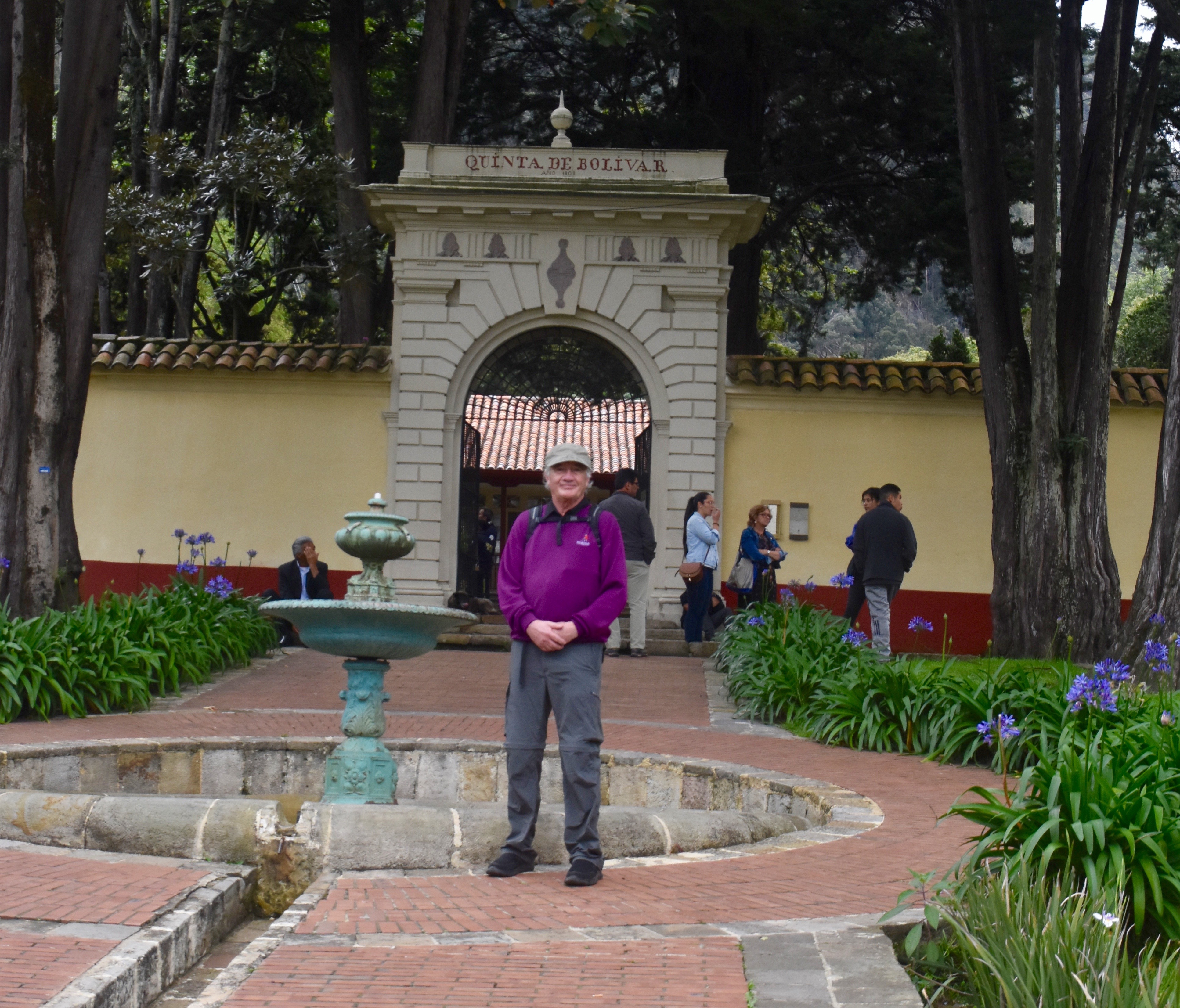
Below the Bolivar Museum there is a very pleasant well treed area that is home to several universities and the remains of the San Francisco River which has been channeled through a series of gentle declines. At first this had me thinking that if ever a river was tamed, this was it, but then I read about the State Of The San Francisco before the restoration and I parked my reservations.
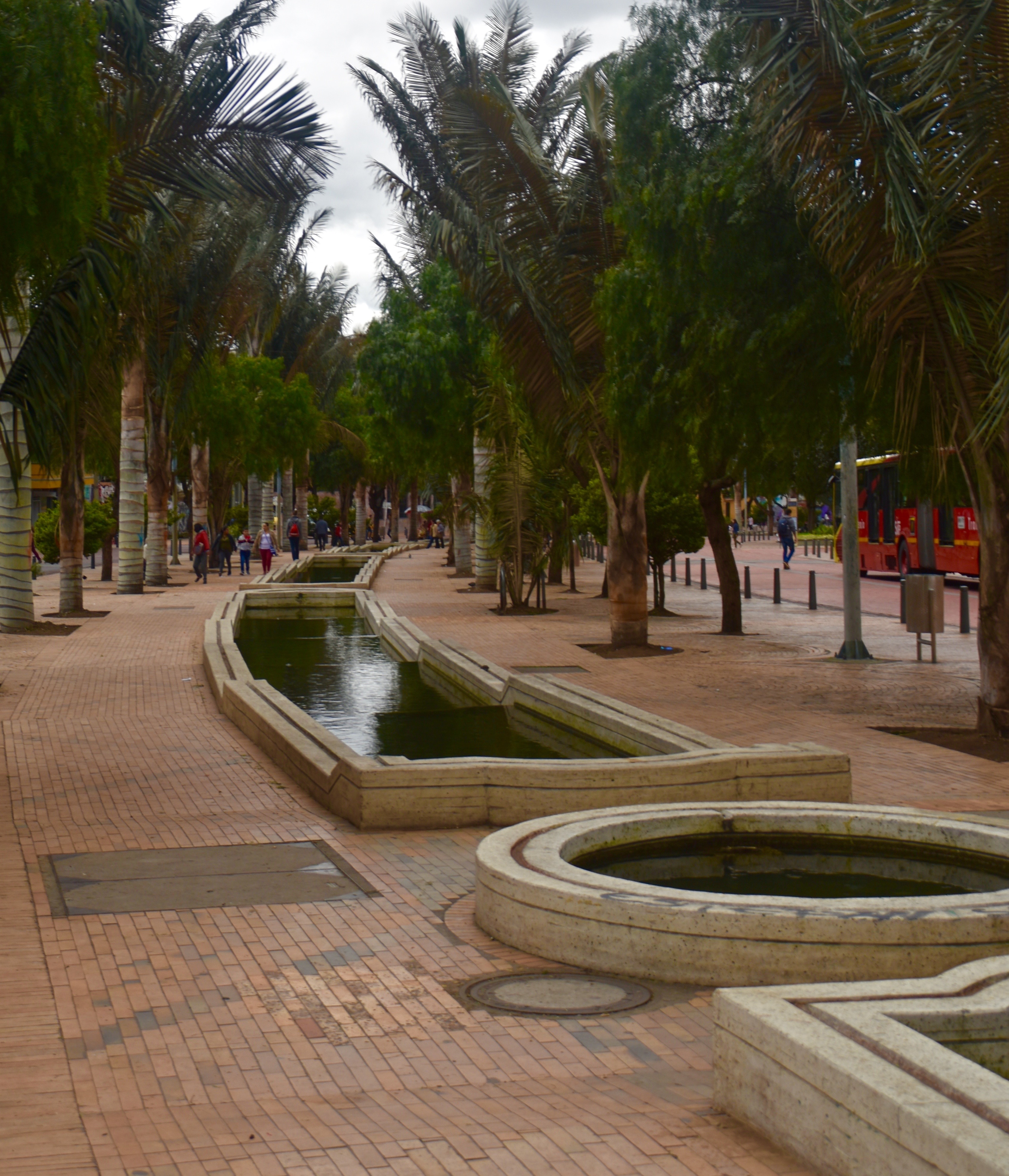
Not long after passing the university area we came across the first large scale work of street art, but first a little rant about graffiti.
Graffiti vs. Street Art
Now I know that different people have different ideas about what is or is not graffiti and the term ‘graffiti artist’ is often applied to people who are actually real artists. For me however, this is graffiti and I hate it. I really hate it. It makes me sick to see subway cars, rail cars, pull down storefronts like this one and almost any other surface that will hold spray paint defaced by this kind of shit.
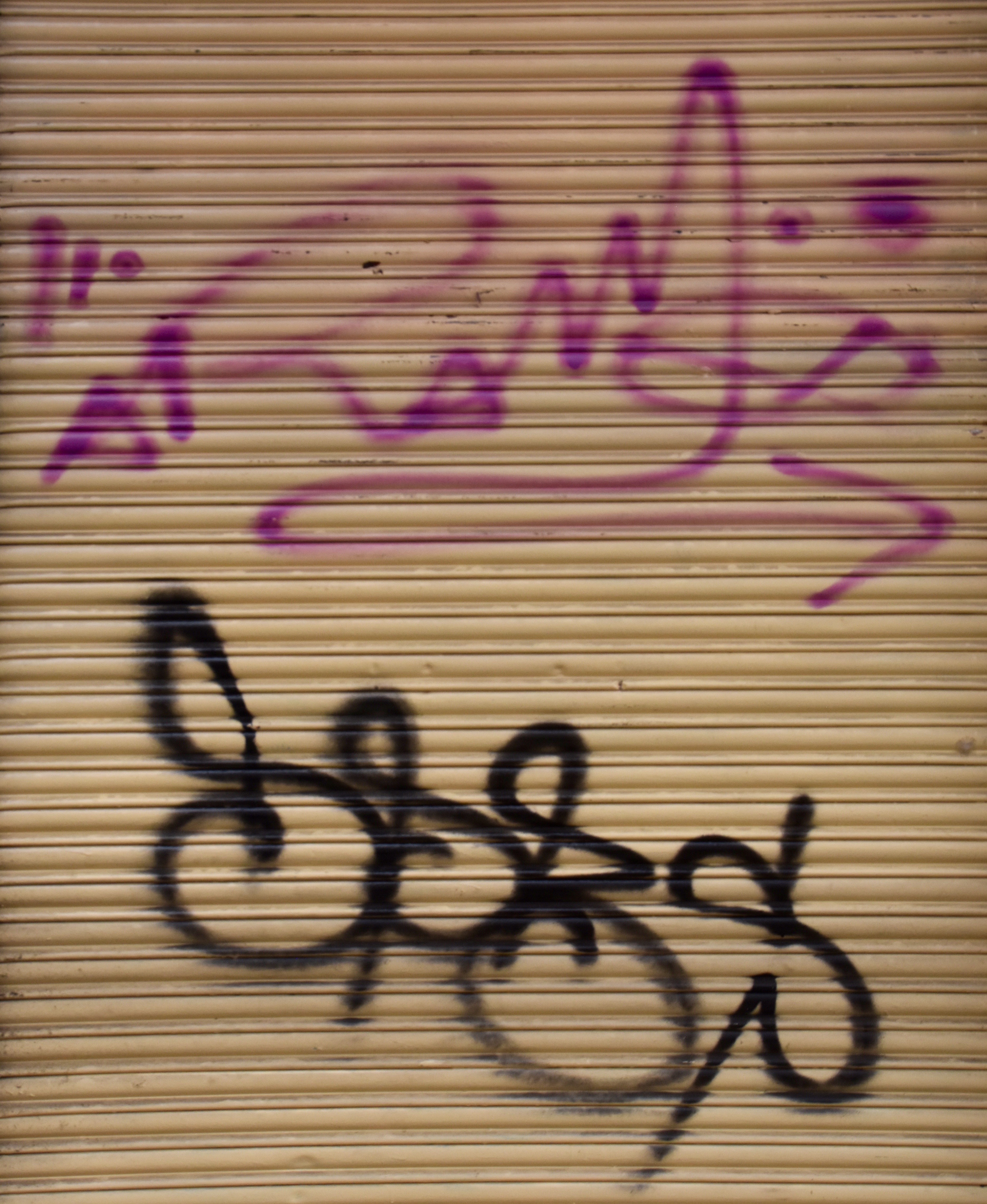
On the other hand, I have a great appreciation for true street art, which in the case of La Candelaria, is an absolutely integral part of the neighbourhood. So what’s the difference between graffiti and street art – at least according to my standards? With apologies to Elizabeth Barrett Browning, let me count the ways.
- Graffiti vandals do their dirty work under cover of darkness and slink away like rats into the sewers. Street artists perform their work in daylight and in full view of any who want to watch them.
- Graffiti vandals don’t leave anything that will identify who they are (except perhaps to other graffiti vandals). Street artists sign their work and often leave contact information.
- Graffiti vandals don’t get anything for their efforts other than the perverse satisfaction of ruining someone else’s property. Street artists are commissioned and paid for their work which can enhance the value of a business and attract customers.
- Graffiti vandals have nothing to say. Tell me from looking at the above picture if it evokes anything in you other than disgust? Street artists do tell stories, usually related to the neighbourhood in which they are created and their works can be powerful calls for political change, recognition of past wrongs or sometimes just wonderful whimsy. The bottom line is they make you feel something, the hallmark of all good art.
- Graffiti vandals are criminals. Defacing property with spray paint like in the above picture is a crime in Colombia. Great street artists are venerated for their work and are respected members of the community, although I do say that with a grain of salt knowing that the artistic temperament leads to some serious whack jobs.
- Most obvious of all – graffiti vandals have no talent and street artists do. If every idiot who could buy a can of spray paint was somehow deigned to have artistic ability then I too could be the next Michelangelo, at least in my twisted mind’s eye. The next time some moron tries to tell me that the people who indiscriminately spray paint other people’s property are just expressing themselves, I will ask them for their address and tell them I’ll be over sometime during the night to express myself on their walls. I’m sure they’ll be thrilled to have my artistry adorn their place.
OK, that’s the rant. Now let’s go look at some La Candelaria street art.
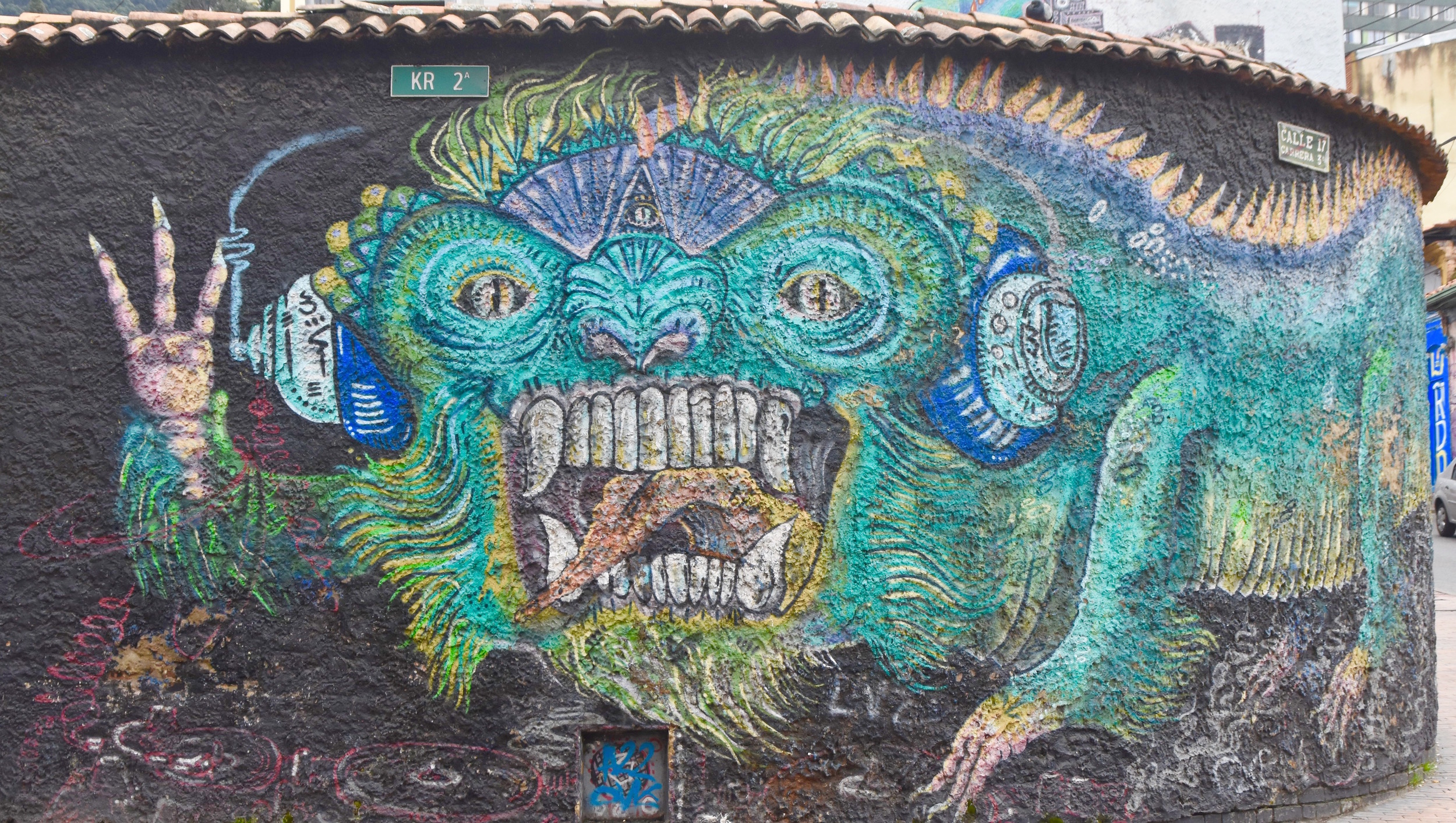
This angry looking dude is a good example of how a good street artist can really create perspective. It’s even more obvious when you see the entire mural.
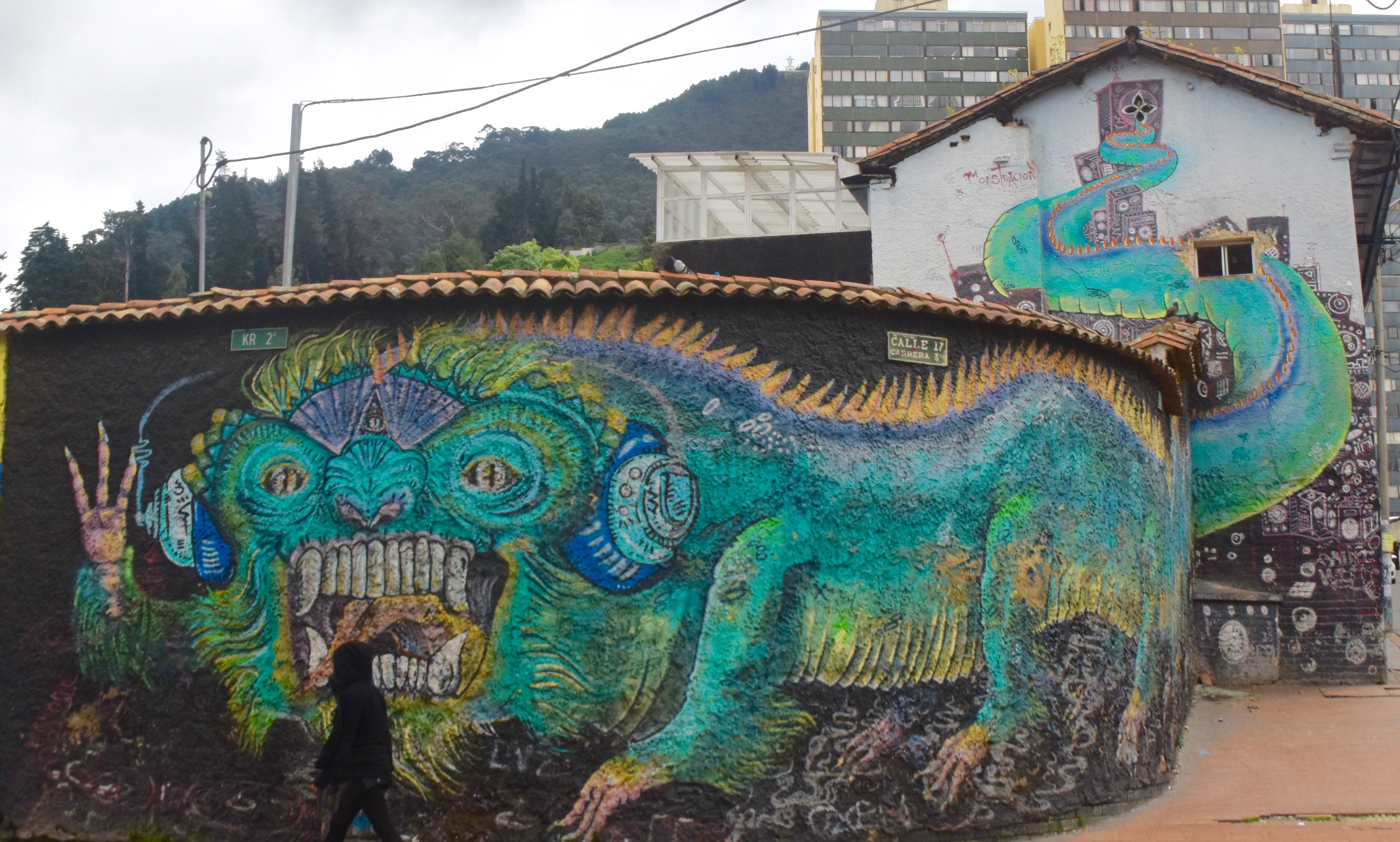
Notice how the dragon’s tail winds its way onto the building next door. This is an amazing piece to see live as it were. No photo can do it justice.
Here’s another example of combining the work of art into the surroundings which you would only notice if someone, like Catalina, points it out to you.
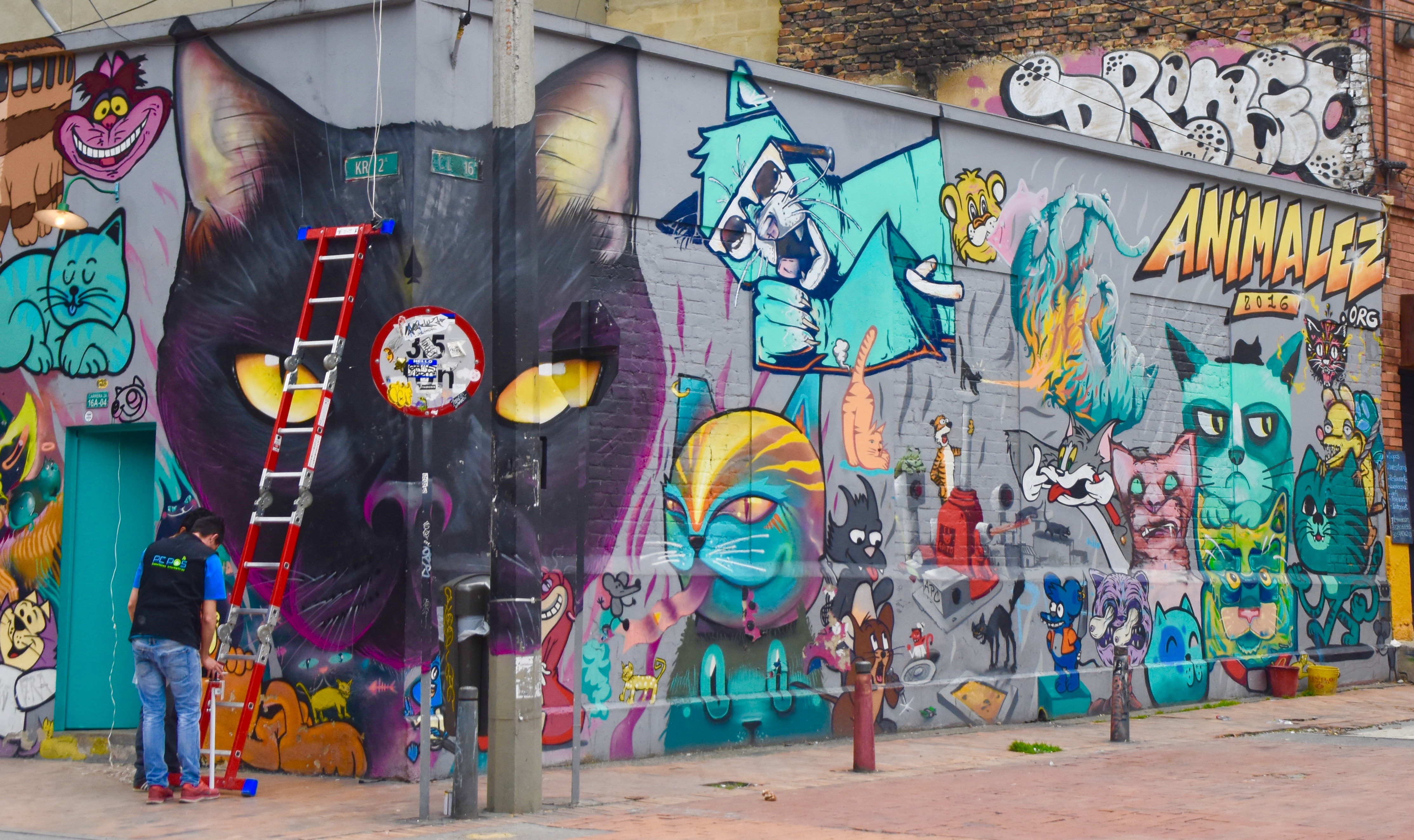
This is a cat mural that covers two sides of brick building with the large black cat face at the juncture of the two walls. Despite the fact that the walls are receding on both sides, when you look at it straight one, it looks flat. Here’s the real kicker. Look at the right eye. From this angle, part of the eye is actually painted on the lamp post in front of it and part of the face coincides with the light pole beside the lamp post. This is brilliant stuff.
Just for fun, see how many famous cats you can identify in this mural? Here’s the part you can’t see in the photo above. Prize of the day if you can spot my all time favourite cat, named for a famous English philosopher.
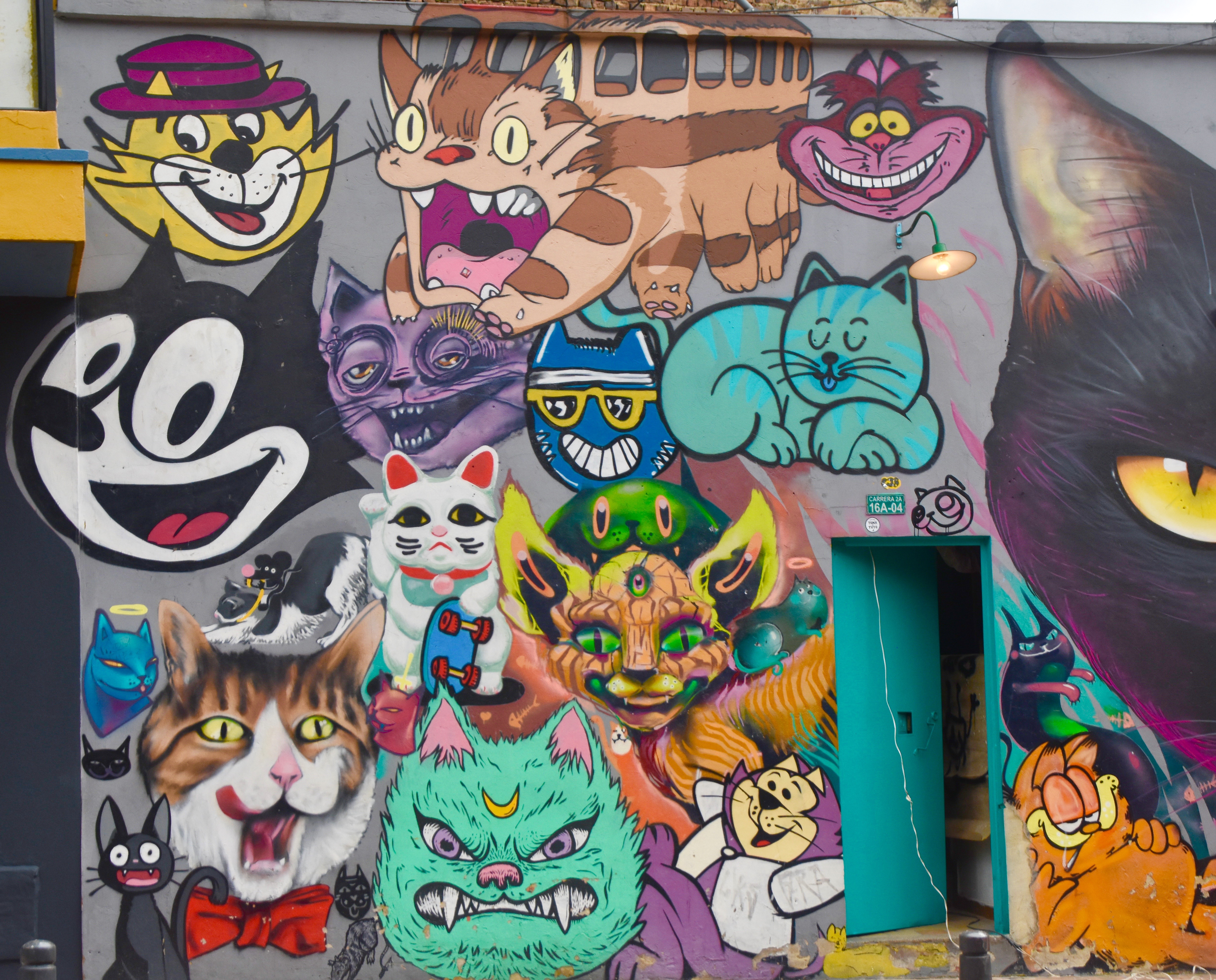
Moving on, we come to a a number of examples the street art is being used as essentially a business promotion, such as this one for Hibiscus Restaurante. Just from one look you know they have fish, chicken, fresh fruits and dessert.

Another example of La Candelaria street art is this somewhat Daliesque series arms and legs that also has elements of baroque trompe l’oeiloften used on the ceilings of churches to represent angels or saints seemingly floating on air. Look at the lower right set of legs and think Tintoretto or Tiepolo. This is interesting stuff.
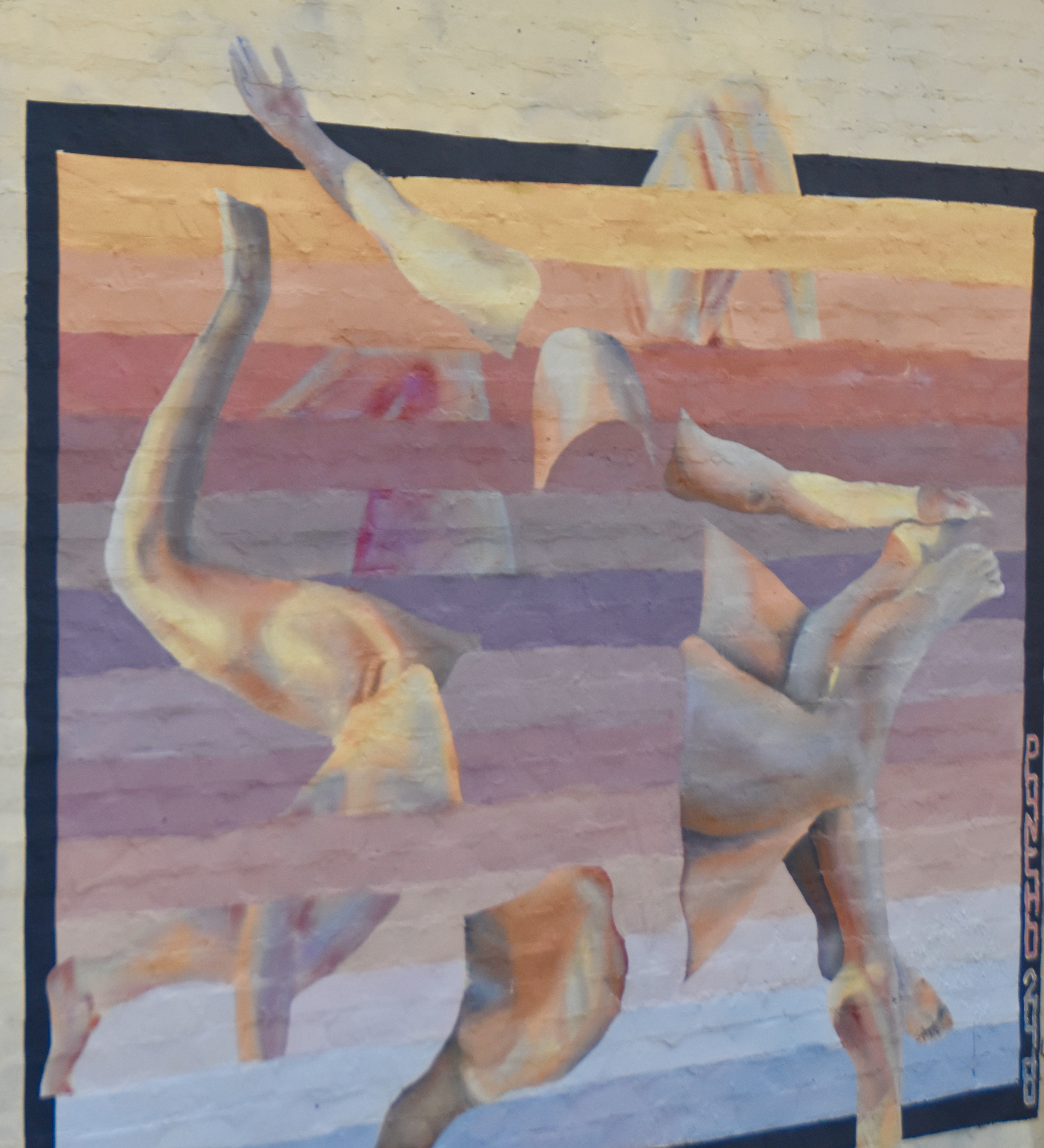
Next we have a mural that depicts the hallucinations of the artist while in a drug induced trance, probably caused by coca leaves. Pre-Colombian shamans used drugs, particularly coca, to create visions that, were, well – pretty far out, which is why lot’s of people do the same thing today. The figure on the right is almost certainly the moon goddess Chia, about which more later. The things on the left I’m not so sure about. The point is that the artist wanted to recreate, first in his mind, and then on this wall, what his predecessors might have envisaged before the Spanish arrived. I also chose this mural because it was one of the few pieces of street art I saw that had been vandalized by ‘taggers’. It brings home pretty clearly who is the artist and who is the vandal.
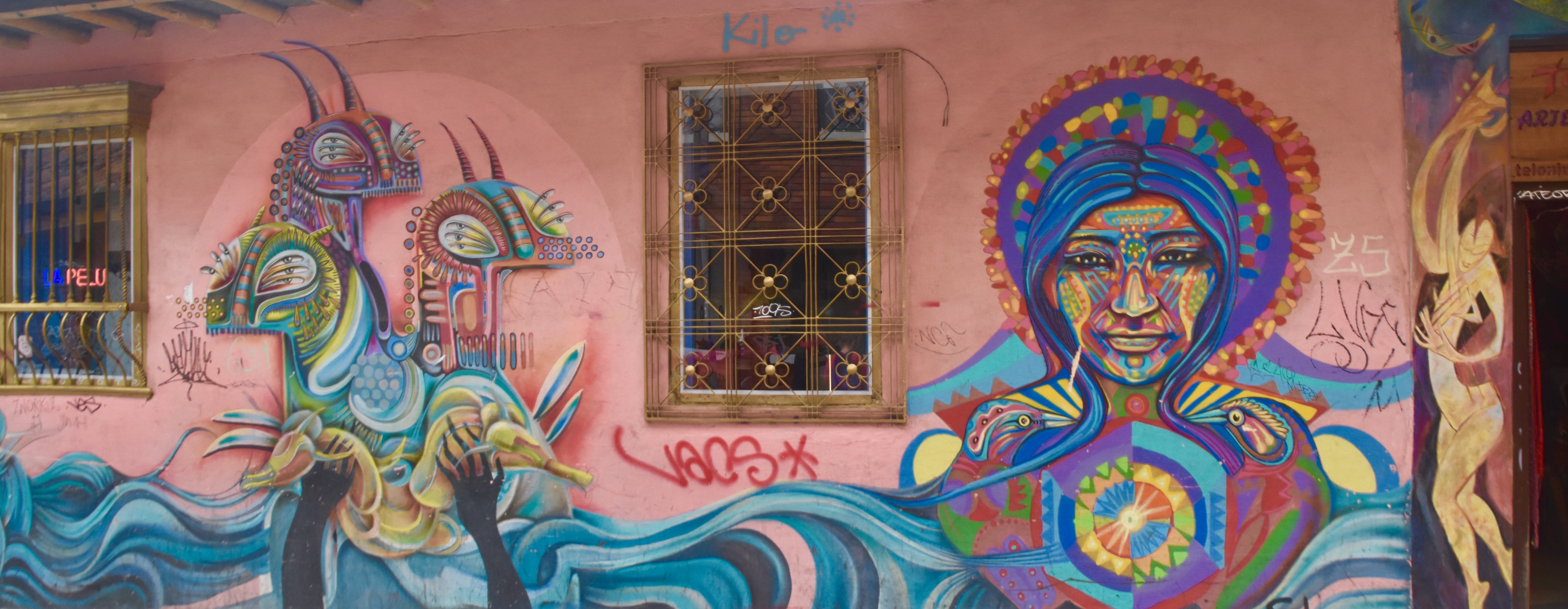
We now arrived at the foot of Callejon del Embudo, allegedly the oldest street in La Candelaria and thus Bogota. It is also called Funnel Alley because it does, in a way, resemble a funnel the way it drains its way out of El Chorro de Quevedo, where Bogota was founded and winds down into the older city proper. It is too narrow for cars and is definitely the #1 place to see street art in Bogota. Despite this, it was not particularly crowded during our visit, a few students and one other obviously tourist couple were all I observed. Everybody but one in this photo belonged to our Adventures Abroad group. You can see the high rise buildings of Bogota in the background.
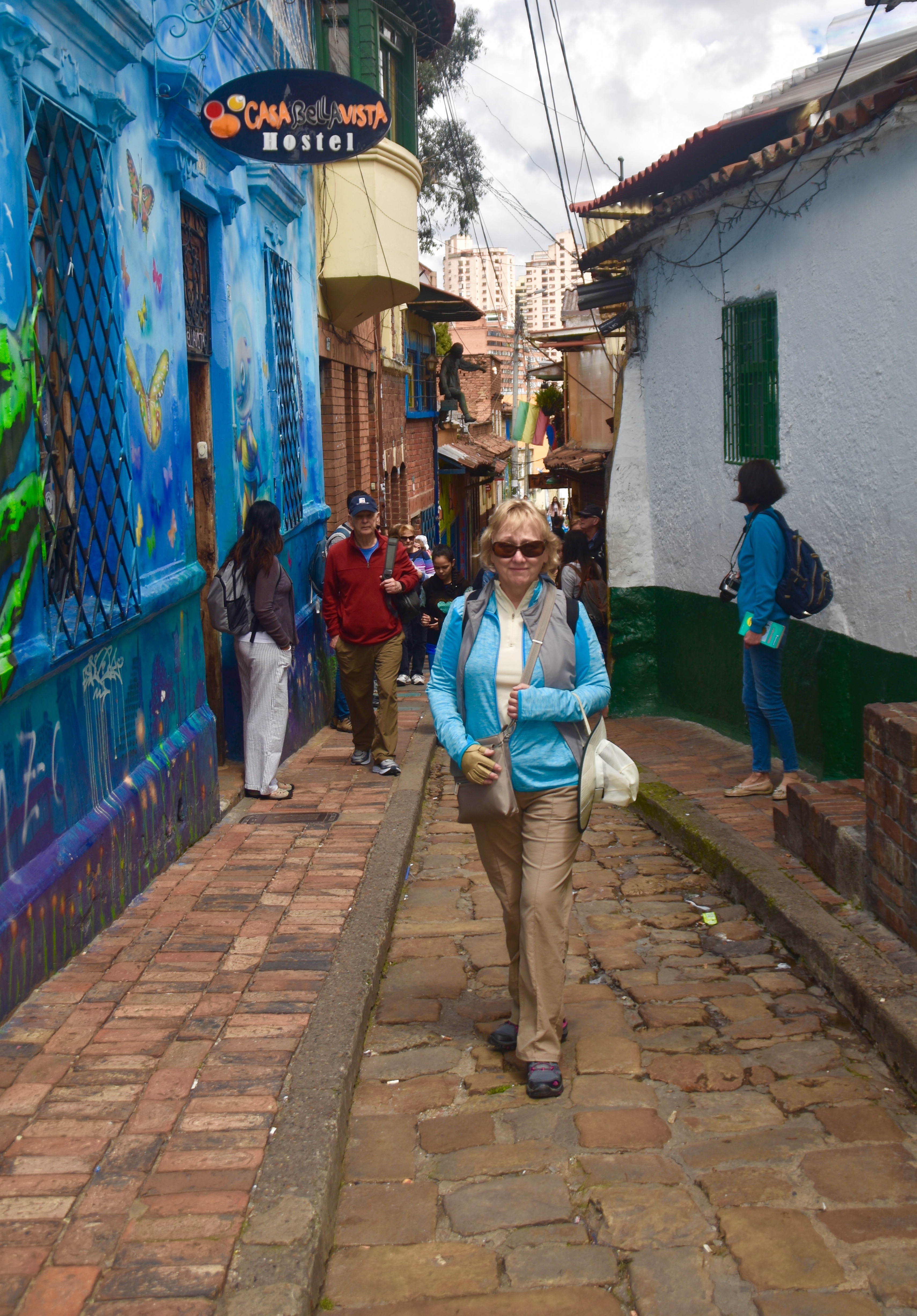
Pre-Colombian Religious Beliefs
The area around Bogota was populated by a people known as the Muisca who were master gold workers. They had two major deities, Sue or Zue, the sun god and Chia, the moon goddess.
On the walls of Funnel Alley is this representation of Sue which is a more primitive and in some ways evocative form of street art.
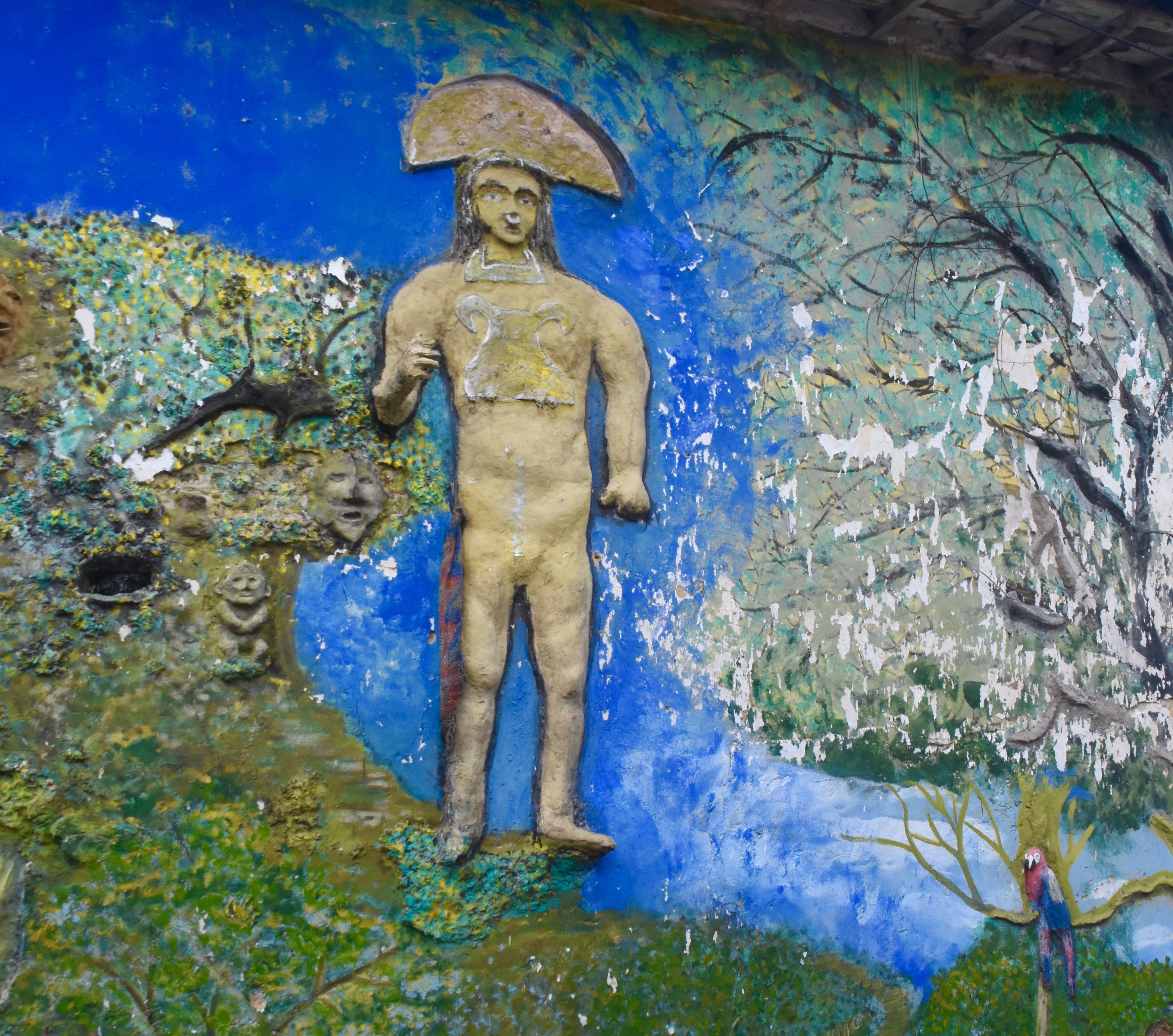
Also here is Catalina pointing out the features of another pre-Columbian figure on the same wall (note that it too has been vandalized.
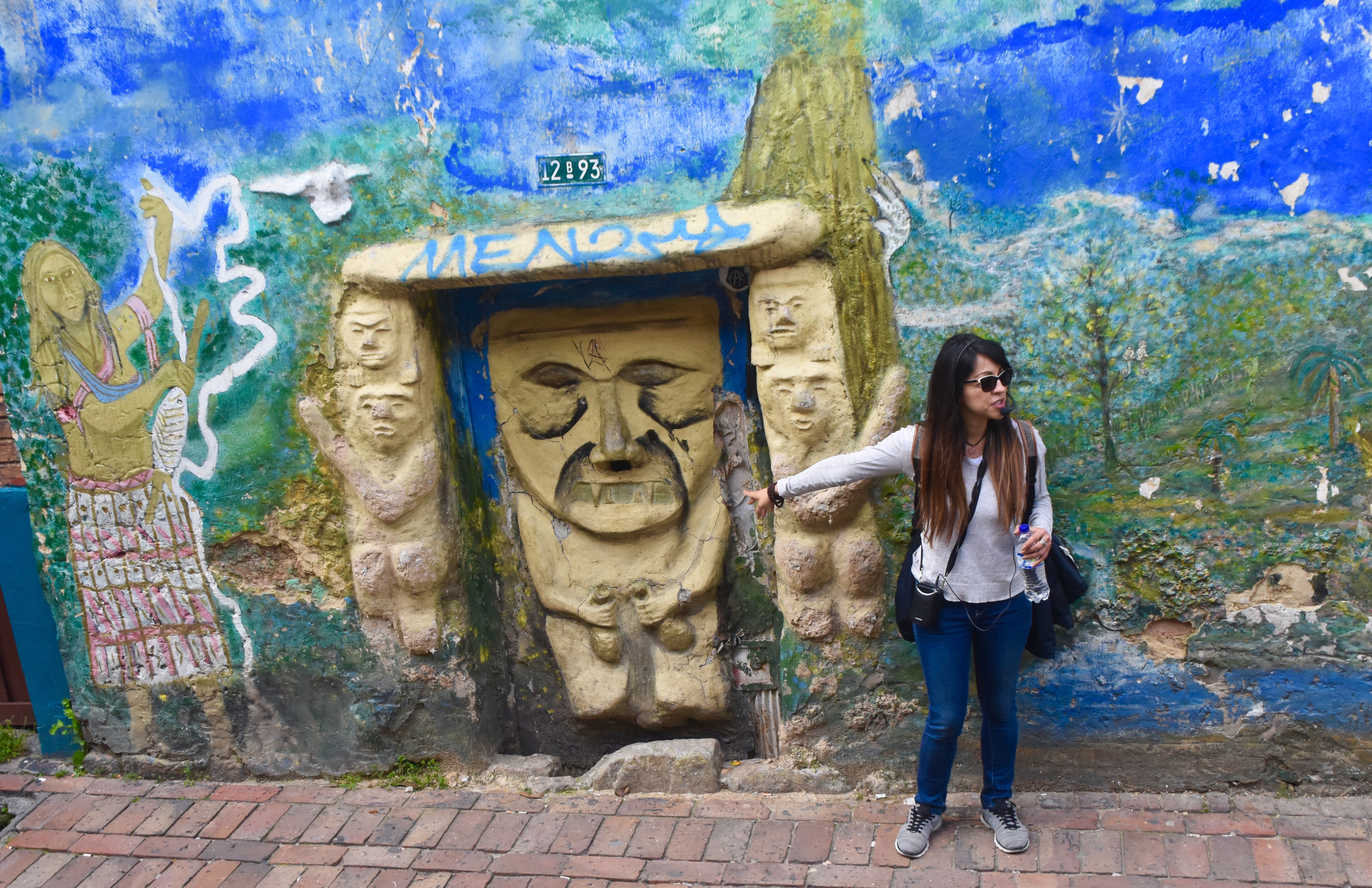
So what’s up with these type of images? I’m no expert, but I’ll hazard a possible explanation which has everything to do with the difference between how the modern day Colombian differs markedly from the modern day North American. When the Spanish came to Colombia and pretty well everywhere else in the new world a number of things consistently happened. First the majority of the native population died from diseases they could not resist – we did that too in North America. Second, those that survived were enslaved or warred upon until they were almost all gone – we did that too. When the indigenous people couldn’t supply the man power necessary to work the mines, fields, you name it, slaves were imported from Africa – we did that too.
But here’s where the two paths diverged. In Colombia and most of Latin America, the Europeans procreated with the indigenous population creating an entirely new race of mestizos. According to Country Studies U.S., a division of the research department of the Library of Congress and thus I think, reputable, about 50% of Colombians are mestizos, 25% white, 20% mulattoe or zambo (black-indigenous mix) 4% black and a tiny 1% pure indigenous. Compare that to my country Canada – of a population of over 35 million people less than 500,000 are identified as a mix of aboriginal and European blood while just over 1.4 million are identified as indigenous.
In Canada it is well nigh impossible for the vast majority of people to be able to understand or identify with the tragedy that was the destruction of native cultures and in particular, religion that was all but inevitable, given the mores of the day, once the Europeans arrived in the New World. In Canada there is a definite us and them. In Colombia, it’s much different. The blood of the oppressed runs in a large majority of the population and when the Catholic Church deliberately set out to destroy and demonize the Muisca religion, it was attacking the ancestry and belief system of many of the people of Colombia today. The ancestors of the persecutors and the persecuted are common to most Colombians. There is no us and them. That is why I think that images of Sue, Chia are other pre-Columbian deities and practices are so prevalent in the art of La Candelaria. These were not the gods and religion of a small minority, but the majority. How do you deal with the fact that the religion you profess to follow today literally destroyed the religion your ancestors professed to follow in the past? It’s something I never really thought about until I came to Colombia and was confronted by the street art and what it stands for.
This image of a elder indigenous woman is extremely moving when viewed in the context of “What have you done to me, my people and my religion?”, when the “You” is the Colombian people themselves.
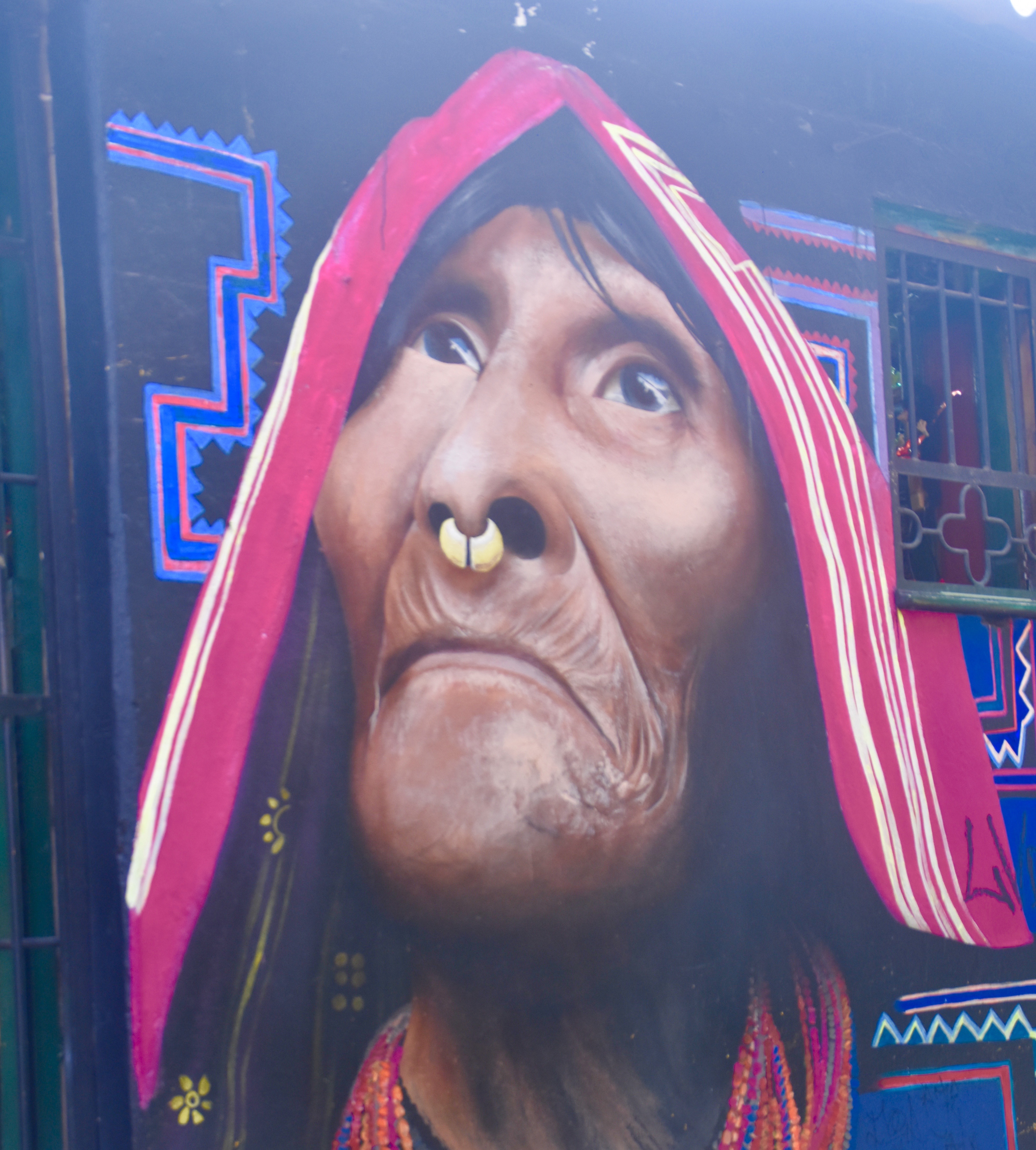
This is another image, I think along the same lines.
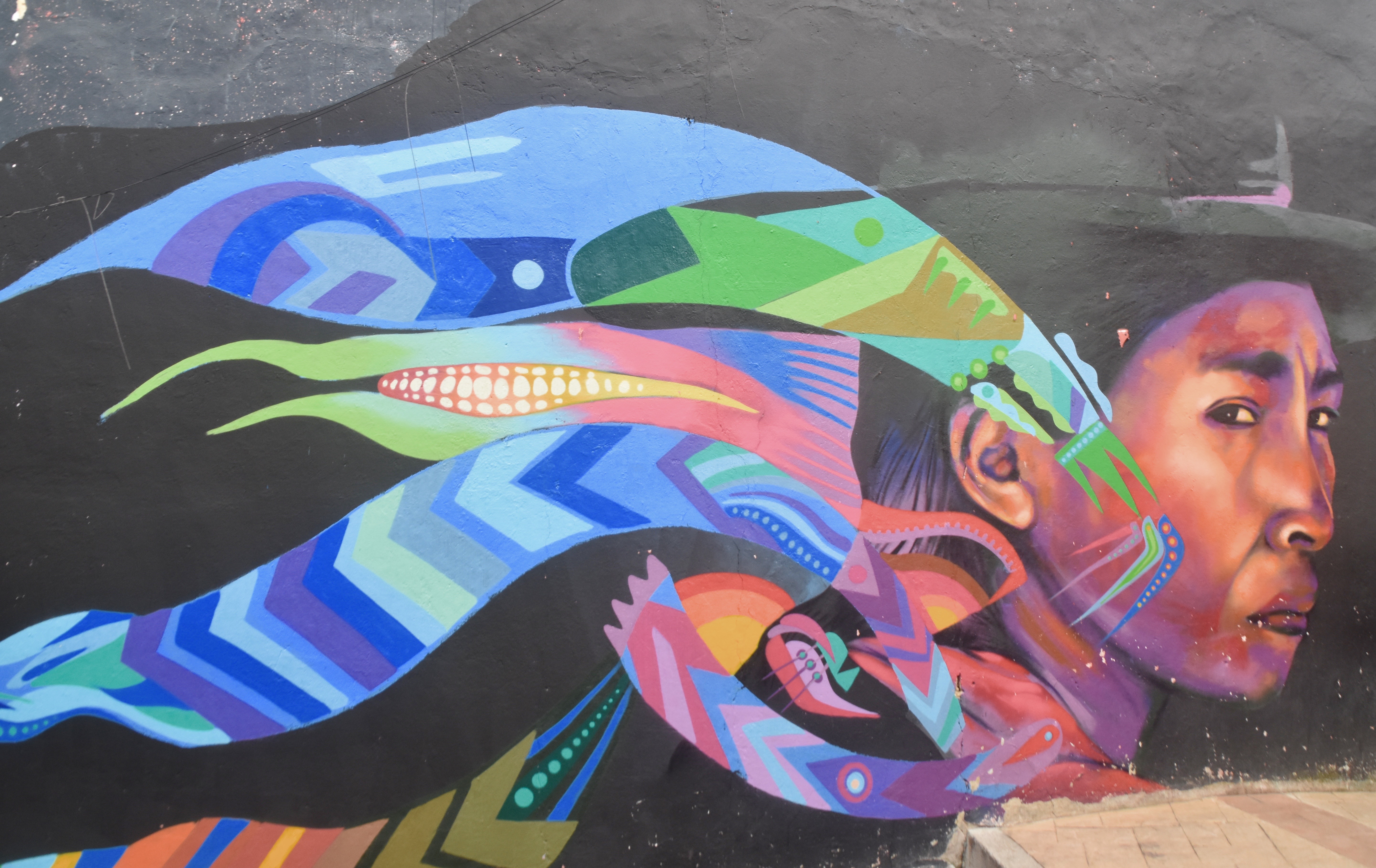
Maybe I’m out to lunch on this or getting too serious so there’s lots more whimsy as well, like this juggler in El Chorro de Quevedo which is our final destination in this post.
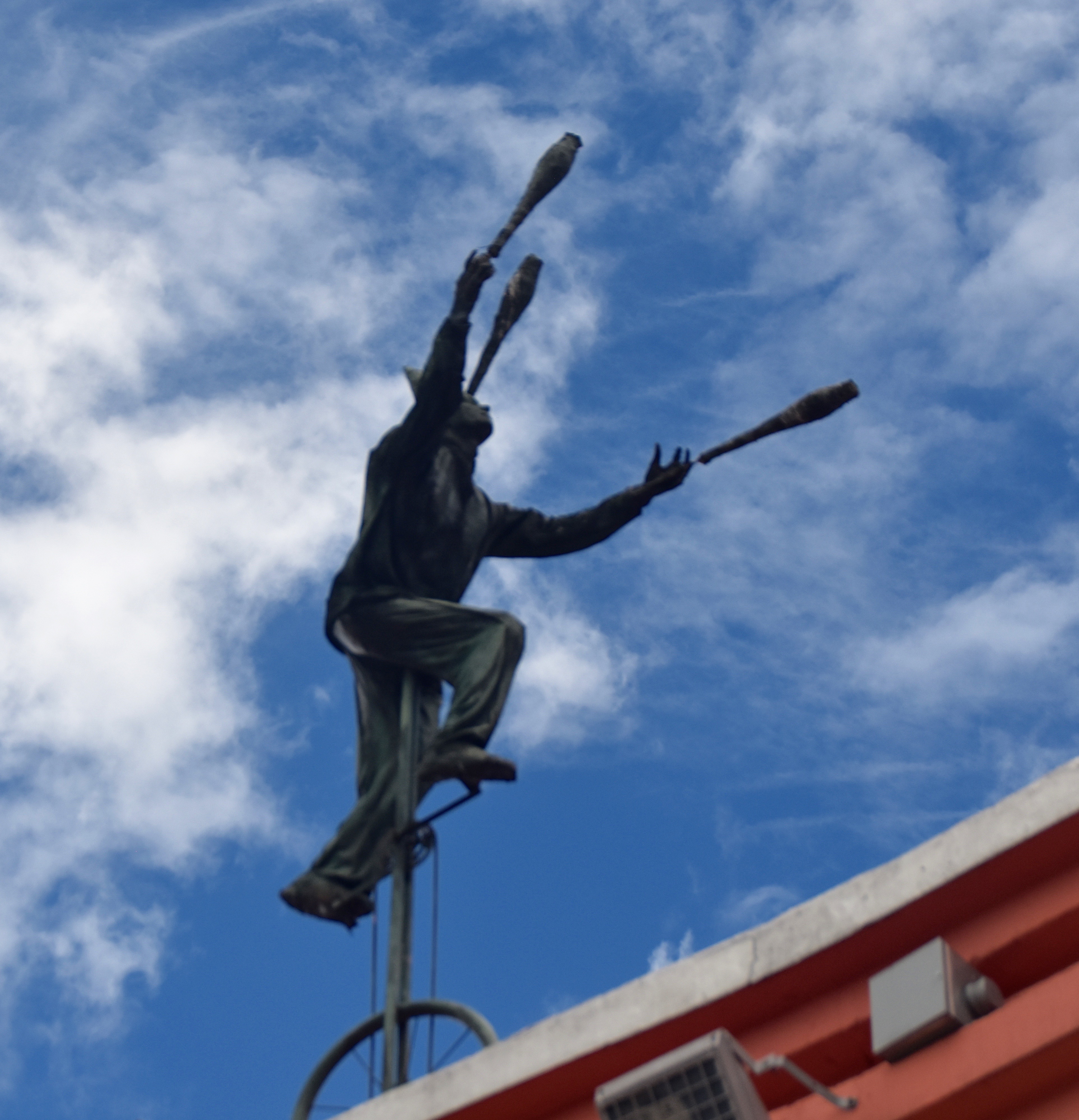
This is the place where Bogota was founded by Gonzalo Jiménez De Quesada in 1538 although, as was usually the case if it was a good location, there was already a native settlement in the area, this one called Bacarta which was eventually corrupted into Bogota. So while the natives lost their land they did get to keep the name.
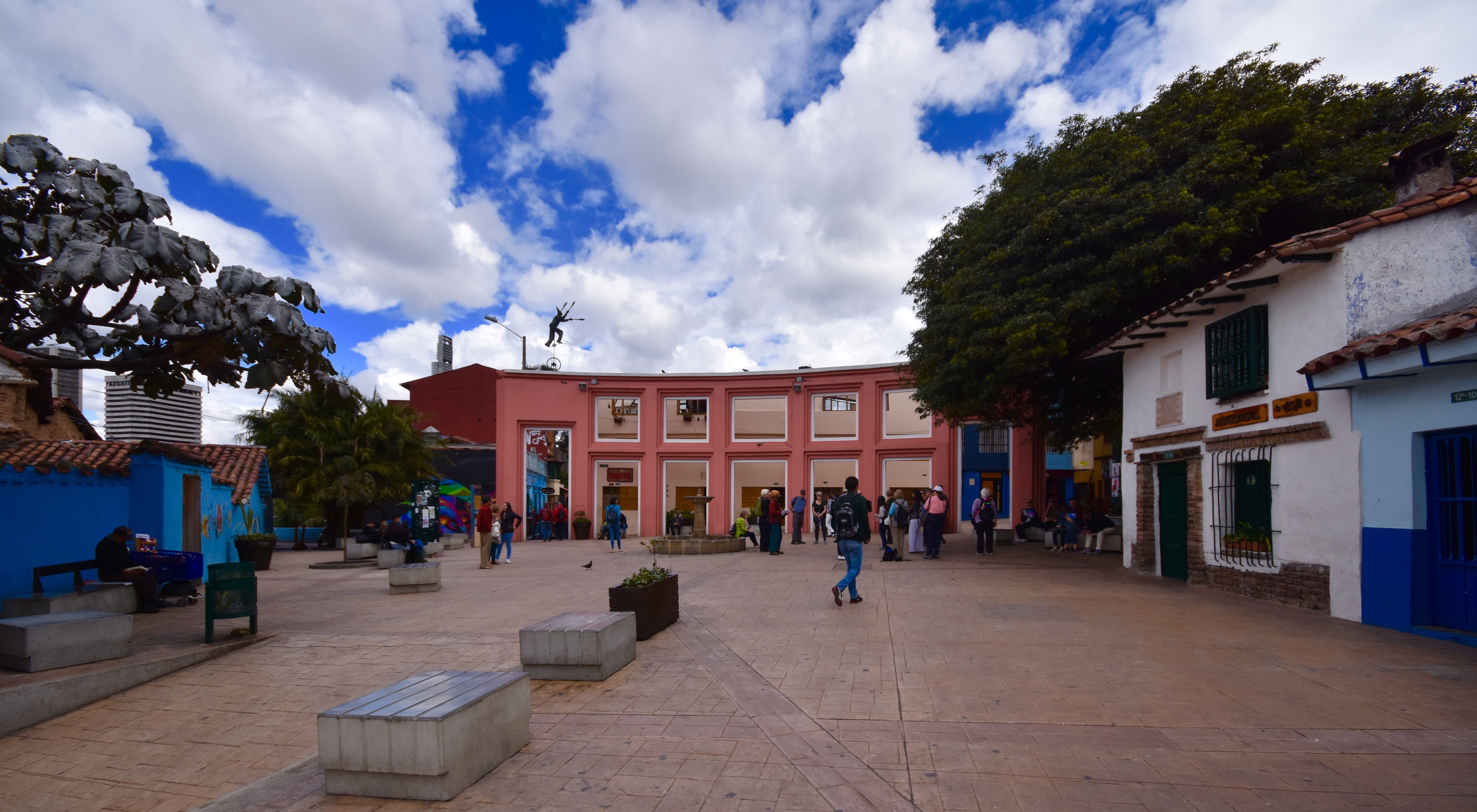
Here is the second church built in the plaza after the first burnt down.
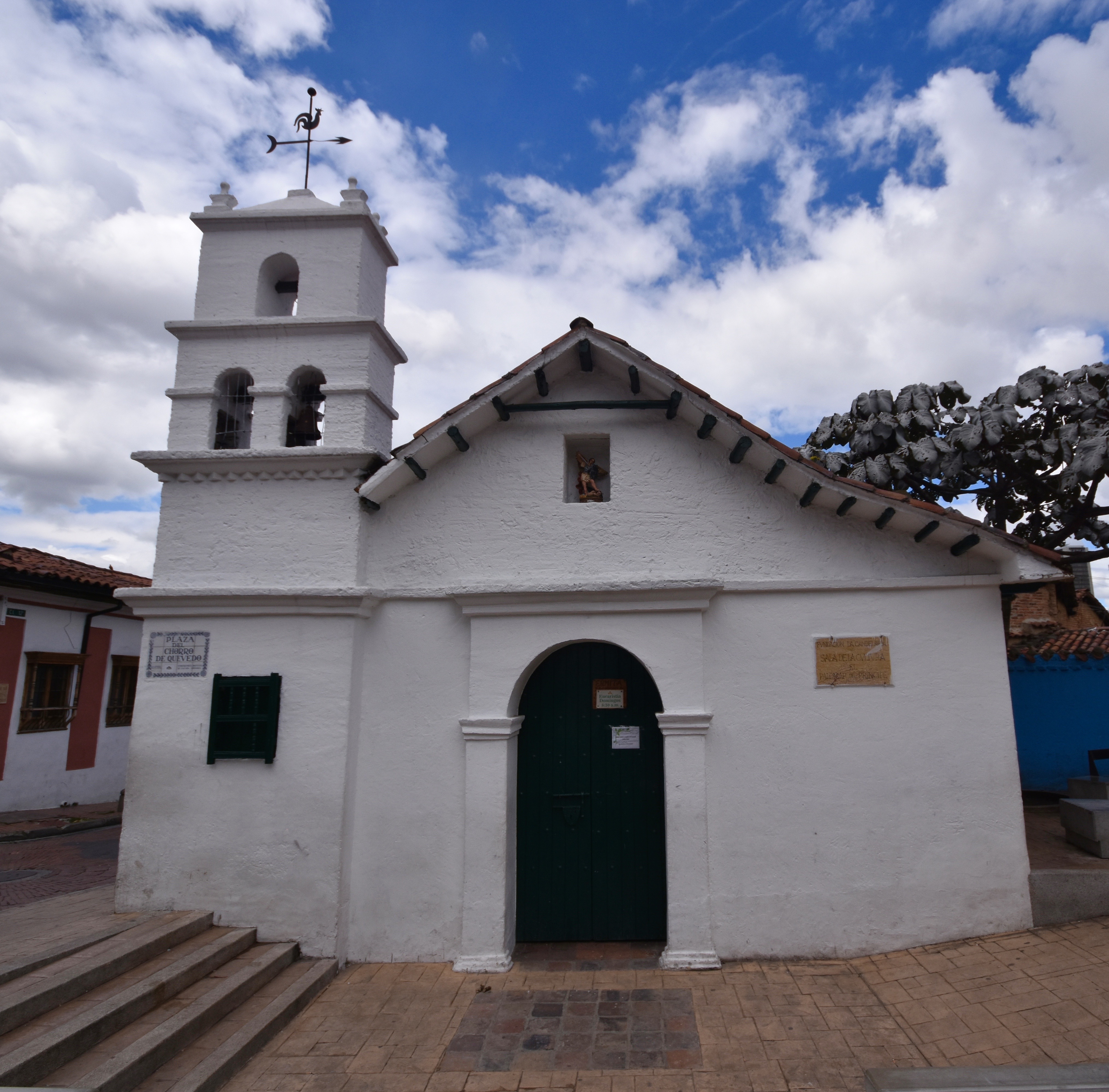
That’s my post on the street art of La Candelaria and what I think is behind a lot of it. This church above just about says it all. If nothing else I hope I have convinced you there’s a difference between vandalism and street art.
Next our group visits the great Museo de Oro or Gold Museum in Bogota and one other place that shall remain unnamed. I hope you’ll join us.
Many thanks again to Dale of the Maritime Explorer for sharing his travels with us. We can't wait to see where he goes next.